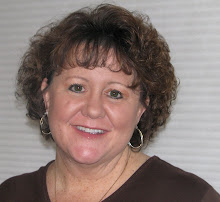
With budget cuts being a predominant theme in schools, an art program can often be one of the first things to be dropped from the curriculum.
But thanks to Sandpoint’s Arts Alliance, a nonprofit organization formed in 2006 and devoted to providing arts education, artist services and advocacy, students at Sandpoint’s Washington Elementary School were able to receive instruction from a professional artist over the last several months. The end result? A piece of public art for the entire community to enjoy.
The alliance’s Artists in Residence Program allowed nearly 100 fourth- and fifth-grade students to work with a local artist to create a public mosaic mural, the theme of which was “Protecting Our Local Waters.” Students crafted handmade ceramic relief pieces in the form of plants, bugs, animals and plankton, which were then incorporated into a ceramic tile mosaic mural on the side of the school.
Lizzy Hughes, the executive director of the Arts Alliance, said the program is intended to teach students the manner in which a piece is created.
“It focuses on the process more than the product,” said Hughes.
When planning this year’s artist in residence project, Hughes said she wanted to ensure that the Arts Alliance worked closely with the schools to integrate the project with their curriculum.
“It gives them (the students) a more well-rounded understanding of their subject matter,” said Hughes. “And I really wanted to make sure that we did a project that was either environmental or social justice oriented so the students have a better understanding of caring for their environment.”
Teacher Sally Loveless said that the fifth-grade students do a project each year called Waterfest, which teaches them about water and various habitats. It provided a perfect opportunity for kids to incorporate what they learned in their classroom with the art project.
“Being able to do art once a week was phenomenal,” said teacher Ellen Darling, adding that it was amazing to see the process go from a pencil sketch to a beautiful mosaic mural.
For the past several months local artist Lynn Guier has worked with the students, teaching them everything from the importance of public art to the process involved in creating a mosaic mural.
There was a unit on healthy water where the Arts Alliance brought in scientists who work with fish, local Lake Pend Oreille, and water collection systems. The students were involved in fish identification, creating fish prints, learning about sedimentation, macro invertebrates and water quality.
After doing research in library books and on the Internet, the students eventually chose the animal they each wanted to draw to be a part of the mural.
Fifth-grader student Ben Schwartz described the process.
“First you draw what you want and then you trace it onto (tracing) paper. You put the paper onto a slab of clay, apply details, glaze it and then you bake it,” said Schwartz, whose creations included a chipmunk, a turtle and a fish.
Fourth-grader Burke Palmer-Fullerton said the message the students wanted to convey is the importance of the environment. “We tried to put out a good note on conserving water,” he said.
Guier said as murals go, this creation rivals some of the better pieces of public art. “I wanted this to be the most spectacular piece of art they’ve seen in Sandpoint,” she said, adding that both the students and teachers were wonderful to work with. “The students all took it very seriously.”
Fourth-grader Sam Diercks said before this project, he typically enjoyed just sketching in a book he has at home. “I didn’t think of myself as an artist before this. Just as a drawer. Now I’m a little bit of a painter,” he said.
Sam and his classmate Rachel Meyer agree it is important to have art in public places where many can enjoy it.
“It might remind someone of their childhood and may make them think of Disneyland,” said Sam.
“It can bring back memories,” added Rachel.
One important lesson Darling said the students have learned is that they each have their own creativity.
“It really allowed each of them to blossom,” she said.
Everyone involved in the project said it was a joint effort by many in the community who came together to teach the children everything from science, to conservation to art.
“It’s more than just art,” said Darling. “It’s thinking about our environment and history. It adds another dimension.”

No comments:
Post a Comment